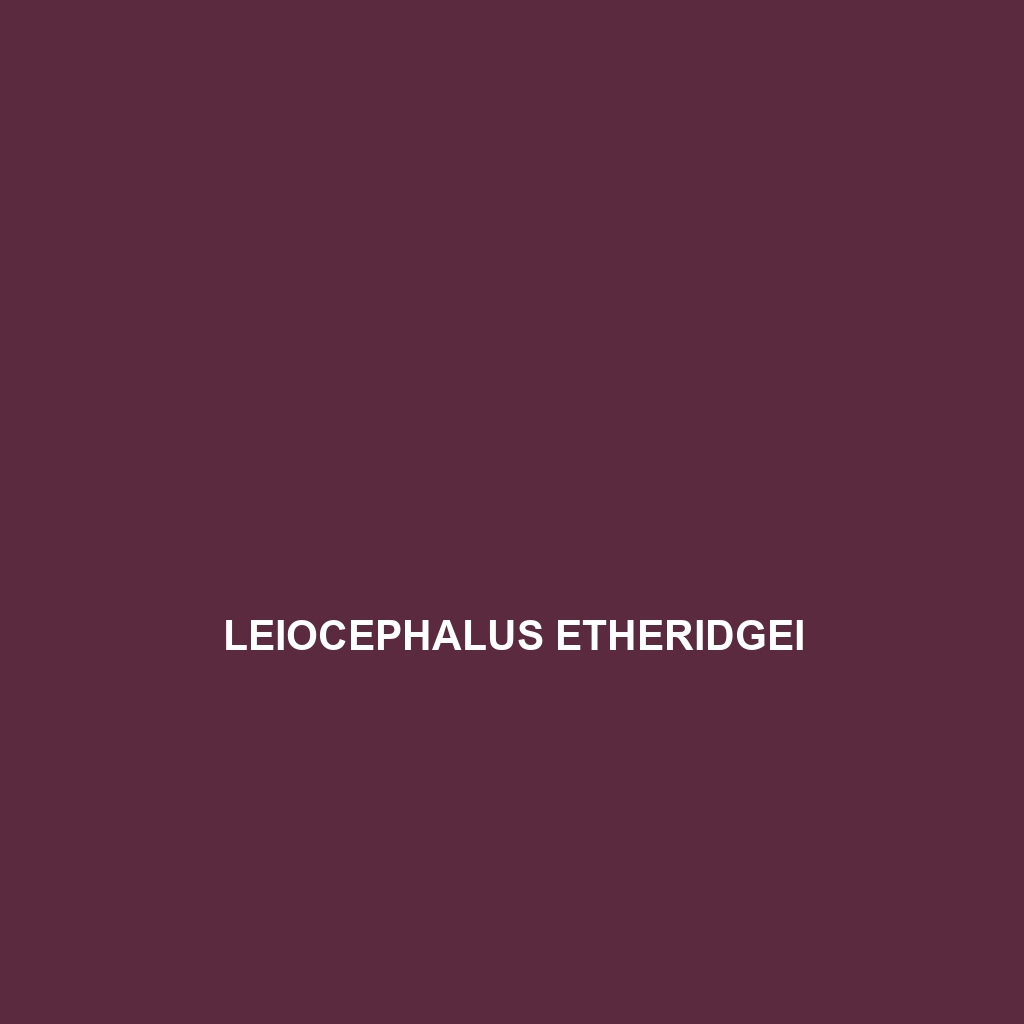Introducing the Lepidodactylus sacrolineatus, or sacrolineatus gecko, a small to medium-sized, nocturnal insectivore thriving in the tropical rainforests of the Pacific Islands. Notable for its regenerative tail and agile climbing abilities, this gecko plays a vital role in maintaining ecological balance by controlling insect populations and serving as prey for larger predators.
Tag: urban development impact
Leiocephalus eremitus
<b>Leiocephalus eremitus</b>, commonly known as the Bahama curly-tailed lizard, is a vibrant, agile lizard measuring 6 to 8 inches long, recognized for its robust body, distinctively flattened head, and bright blue throat markings. Thriving in diverse habitats across the Bahama Islands, it plays a vital role in controlling insect populations as an insectivore while exhibiting fascinating social behaviors during mating season.
Kinosternon leucostomum
Discover the <b>white-throated mud turtle</b> (<i>Kinosternon leucostomum</i>), a resilient and adaptable species native to freshwater habitats in Central and northern South America, known for its distinctive white or yellow throat and omnivorous diet. Thriving in warm, humid environments, this turtle plays a crucial role in maintaining ecosystem balance while facing threats from habitat loss and pollution.
Hemiphyllodactylus linnwayensis
<p><b>Hemiphyllodactylus linnwayensis</b> is a slender, prehensile-tailed gecko native to the tropical rainforests of Southeast Asia, thriving in humid environments. This nocturnal insectivore plays a vital role in its ecosystem by regulating insect populations while exhibiting remarkable camouflage abilities for survival.</p>
Hemidactylus saxicolus
<p><b>Hemidactylus saxicolus</b>, a fascinating gecko native to tropical East Africa, thrives in rocky habitats and showcases a unique ability to regenerate its tail. This nocturnal insectivore plays a vital role in controlling pest populations while exhibiting intriguing mating behaviors and adaptations for survival.</p>
Eulamprus quoyii
<b>Eulamprus quoyii</b>, commonly known as Quoy's Frog or the Eastern Water Skink, is a diurnal insectivore found in eastern Australia's moist rainforests, temperate forests, and savannas. With a slender body, varying shades of olive green or brown, and a unique ability to detach its tail when threatened, this resilient skink plays a vital role in its ecosystem by regulating insect populations and serving as a food source for larger predators.
Eublepharis hardwickii
Discover the captivating Eublepharis hardwickii, or Hardwicke’s gecko, a nocturnal insectivore native to the dry forests of the Indian subcontinent. With its distinctive yellow to brown patterned skin and remarkable camouflage capabilities, this gecko thrives in arid climates, showcasing its adaptability and vital role in its ecosystem.
Cnemaspis phuketensis
Discover the exotic Cnemaspis phuketensis, or Phuket rock gecko, a small, striking gecko native to the limestone hills and rocky outcrops of Phuket, Thailand. With its distinct gray and brown coloration, large bulging eyes, and diurnal behavior, this vulnerable species plays a crucial role in its ecosystem while captivating herpetologists and nature enthusiasts alike.
Cnemaspis flaviventralis
<p>Discover the vibrant <strong>Cnemaspis flaviventralis</strong>, or yellow-bellied rock gecko, native to the tropical forests and rocky hillsides of Southeast Asia. This striking nocturnal gecko, measuring 10 to 15 cm, is known for its yellowish belly and excellent climbing abilities, playing a crucial role in controlling insect populations in its habitat.</p>
Aspidoscelis cozumela
Introduce the Cozumel Whiptail Lizard (<i>Aspidoscelis cozumela</i>), a medium-sized, insectivorous lizard native to Cozumel Island, known for its slender body, distinctive stripes, and unique ability to reproduce through parthenogenesis. This vulnerable species thrives in dry tropical habitats and plays a crucial role in maintaining ecological balance.









